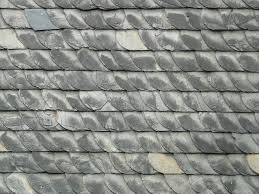1. Choosing The Wrong Slate Variety
 Harvested from earth and worked on to create individual shingles. Slate roofs have a long life expectancy because they are basically made from stone and it’s a natural material. However, there might be some invisible fractures that might cause the slate to break off.
Harvested from earth and worked on to create individual shingles. Slate roofs have a long life expectancy because they are basically made from stone and it’s a natural material. However, there might be some invisible fractures that might cause the slate to break off.
Depending on the slate variety you choose for your roof, the life expectancy might also vary. For instance, there are some slate varieties that crumble and start flaking when the life expectancy ends. Therefore, before choosing any specific type of slate roof, you need to consider the type of roof, the durability and the origin if you want it to last a long time.
2. Damaged Flashings
Even when you choose a good slate variety, the flashings might wear out and start leaking before the slate reaches the end of its lifespan. They are often installed between various roof planes to prevent any entry of water in the valleys, chimneys and other roof penetrations. When you notice the flashings are failing, it’s prudent to start removing them immediately then replace. You don’t need to remove the entire roof for this. Note that, failure to remove this forces the water to enter the roof and might cause more damage than you had anticipated.
3. Poor Installation
Yes, the roof might be in a good condition and the flashings are ok but if it was poorly installed in the first place, then a lot of damage is bound to happen. Therefore, you need to take your time to find the best installation experts for your roof to make sure the job is done right. Certainly, it would be a loss if your roof didn’t last through the recommended years but just a few before you need to replace it immediately.
4. Missing Or Broken Slates
If your roof has been installed for a few centuries, it’s bound to have a few missing or damaged slates. Since it’s made out of stone, a natural material there might be some hairline cracks that might eventually break. You can remove the faulty slates and replace them with new ones, as close as possible to the previous ones to avoid any discoloration or odd looking areas in the roof.